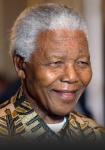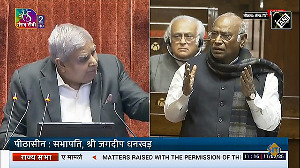In May 2004, the installation of the United Progressive Alliance government at the Centre made analysts and experts talk about the return of the 'dream team' to steer the Indian economy to a higher growth path.
The reference was to Manmohan Singh and Palaniappan Chidambaram. Dr Singh was the finance minister in the PV Narasimha Rao government and Mr Chidambaram was its commerce minister. The two helped put together the blueprint for ushering in the first phase of economic reforms in 1991.
With Dr Singh as the Prime Minister and Mr Chidambaram as the finance minister in 2004, it was natural for anyone to celebrate the return of that dream team.
But it is important to note that the Singh-Chidambaram dream team of the 1990s did not last long. In 1992, Mr Chidambaram quit the Narasimha Rao ministry in the wake of a controversy over some investments made by his family.
There was no perceptible slowdown in the pace of economic reforms immediately after Mr Chidambaram's departure. Nor did the team at the helm of economic administration suffer in quality.
A few months before Mr Chidambaram left, Manmohan Singh had got Montek Singh Ahluwalia shifted from the commerce ministry to the finance ministry. Soon, Mr Ahluwalia became a key member of Dr Singh's "A" team of economic administrators. That also marked the birth of the Singh Parivar.
For the uninitiated, the origin of the concept of the Singh Parivar needs to be explained. With economic reforms under implementation, the Narasimha Rao government had come under attack by the hard-core, Hindutva-loving Rashtriya Swamsevak Sangh and its votaries within the Bharatiya Janata Party.
It was obvious that they were not comfortable with economic liberalisation, which exposed sections of the domestic industry and trade to competition from foreign companies and their products.
That was also why saner and pro-liberalisation elements in the Bharatiya Janata Party like Jaswant Singh had to attend closed-door sessions with representatives of the foreign investing community to assure them that their investments would remain safe because the reforms in many ways were irreversible in this country.
The Sangh Parivar (represented by the RSS and Swadeshi Jagaran Manch) was opposed to foreign investment and imports, while the Singh Parivar, led by Manmohan Singh and Montek Singh Ahluwalia, spearheaded the economic reforms programme.
The Singh Parivar did not just refer to the Singh-Ahluwalia duo. As months went by, Dr Singh managed to put together a team of competent officers around him who became instrumental in driving economic policy changes.
There was N K Singh (who was initially a joint secretary in the finance ministry and later became additional secretary in the same ministry under Dr Singh), Ashok Desai, who, however, left the ministry within a couple of years and was succeeded by Shankar N Acharya, Chakravarthy Rangarajan (who was initially responsible for drafting the report that became the foundation for introducing exchange rate policy reforms and later went over to Mumbai to head the Reserve Bank of India) and Y Venugopal Reddy, who was a joint secretary in the finance ministry.
There were others also --M R Sivaraman, revenue secretary, and K P Geethakrishnan, finance secretary, who gave substance and teeth to the Singh Parivar's resolve to take reforms forward.
Many of the members of the original Singh Parivar have either retired or have chosen to move away from the limelight. But quite a few others have regrouped to effect what could be described as the reincarnation of the Singh Parivar.
In less than two months of the formation of the UPA government with Manmohan Singh as prime minister, Mr Ahluwalia joined his former boss as deputy chairman of the Planning Commission.
It is widely acknowledged that Mr Ahluwalia is emerging as one of the most powerful and influential deputy chairmen the Planning Commission has seen since its formation.
The Planning Commission, under Mr Ahluwalia's deputy chairmanship, has become a formidable power centre so much so that for the first time in recent history, the finance ministry has to contend with the Commission's might on the question of what should be the government's budgetary support to the central Plan and some other fiscal issues of this nature.
Soon one of Mr Ahluwalia's former colleagues, Arvind Virmani, will join him in the Planning Commission. In the 1990s, Arvind Virmani was brought to the finance ministry, when Mr Ahluwalia was the finance secretary.
C Rangarajan, too, is back in Manmohan Singh's 'A' team. After completing his tenure as the chairman of the Twelfth Finance Commission, Dr Rangarajan was appointed as the chairman of the Prime Minister's Economic Advisory Council.
In that capacity, he is vetting and providing intellectual inputs to all important economic policy proposals that are coming up for clearance or implementation. Dr Rangarajan's name has just been cleared for nomination to the Rajya Sabha. There are reports that he might assume ministerial responsibility.
Manmohan Singh's dream team is still around and doing a decent job. But there are unmistakable signs of that dream team becoming the Singh Parivar.
How that transformation takes place and with what consequences will be an interesting phase to watch.







 © 2025
© 2025